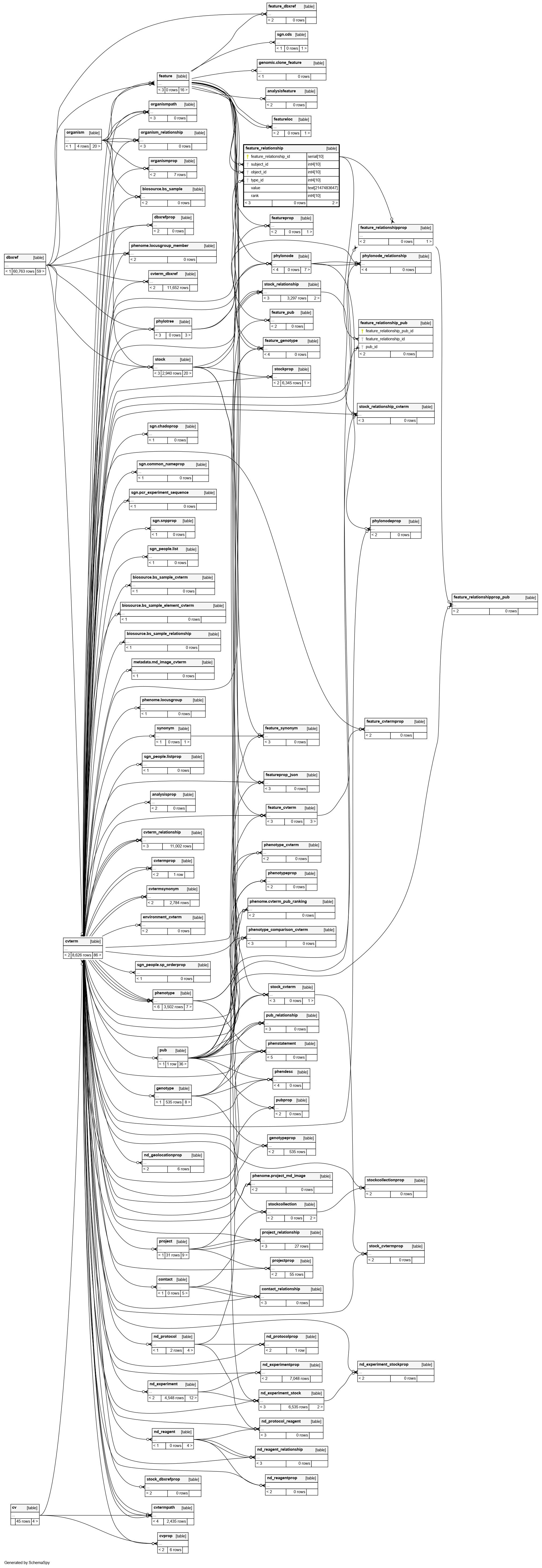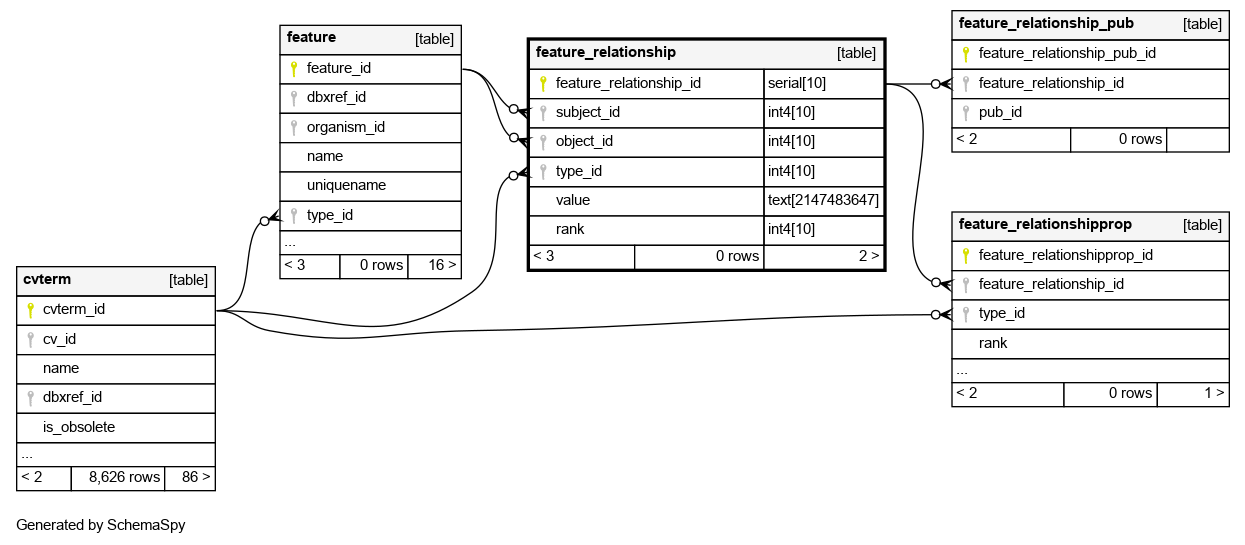Columns
| Column | Type | Size | Nulls | Auto | Default | Children | Parents | Comments | ||||||
|---|---|---|---|---|---|---|---|---|---|---|---|---|---|---|
| feature_relationship_id | serial | 10 | √ | nextval('feature_relationship_feature_relationship_id_seq'::regclass) |
|
|
||||||||
| subject_id | int4 | 10 | null |
|
|
the subject of the subj-predicate-obj sentence. This is typically the subfeature |
||||||||
| object_id | int4 | 10 | null |
|
|
the object of the subj-predicate-obj sentence. This is typically the container feature |
||||||||
| type_id | int4 | 10 | null |
|
|
relationship type between subject and object. This is a cvterm, typically from the OBO relationship ontology, although other relationship types are allowed. The most common relationship type is OBO_REL:part_of. Valid relationship types are constrained by the Sequence Ontology |
||||||||
| value | text | 2147483647 | √ | null |
|
|
Additional notes/comments |
|||||||
| rank | int4 | 10 | 0 |
|
|
The ordering of subject features with respect to the object feature may be important (for example, exon ordering on a transcript - not always derivable if you take trans spliced genes into consideration). rank is used to order these; starts from zero |
Indexes
| Constraint Name | Type | Sort | Column(s) |
|---|---|---|---|
| feature_relationship_pkey | Primary key | Asc | feature_relationship_id |
| feature_relationship_c1 | Must be unique | Asc/Asc/Asc/Asc | subject_id + object_id + type_id + rank |
| feature_relationship_idx1 | Performance | Asc | subject_id |
| feature_relationship_idx2 | Performance | Asc | object_id |
| feature_relationship_idx3 | Performance | Asc | type_id |



